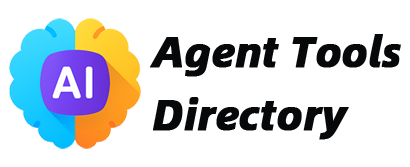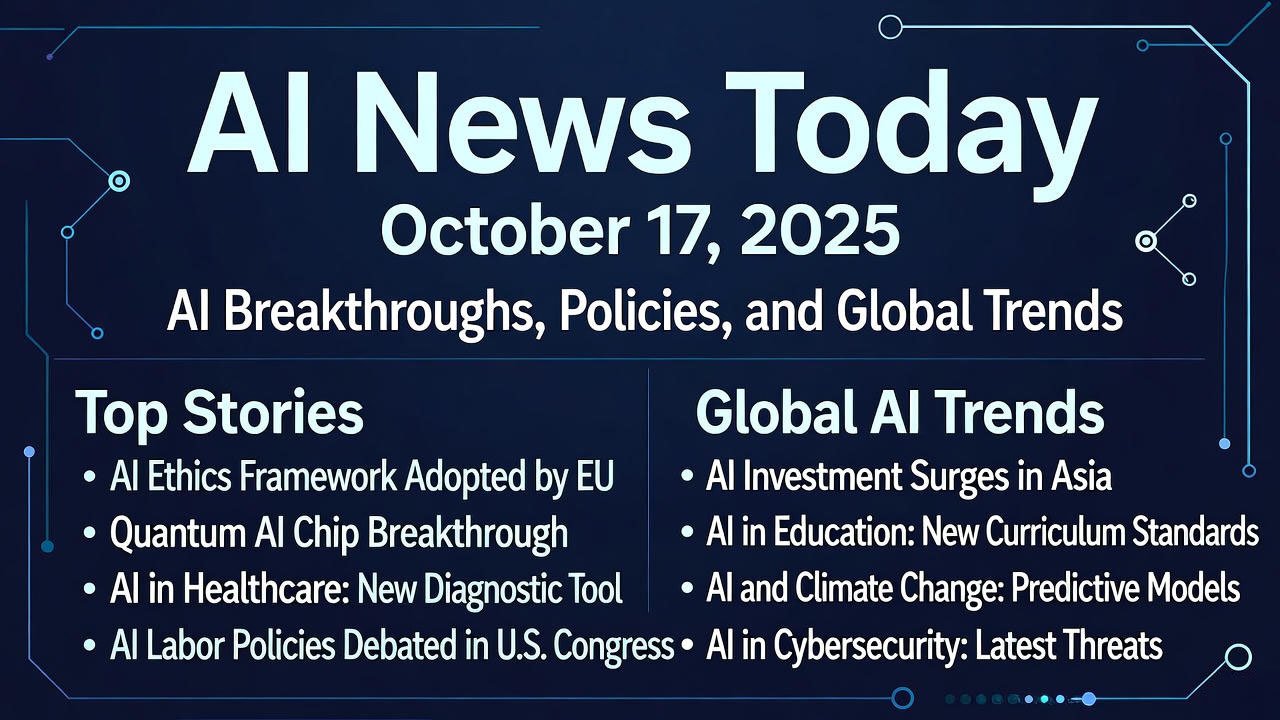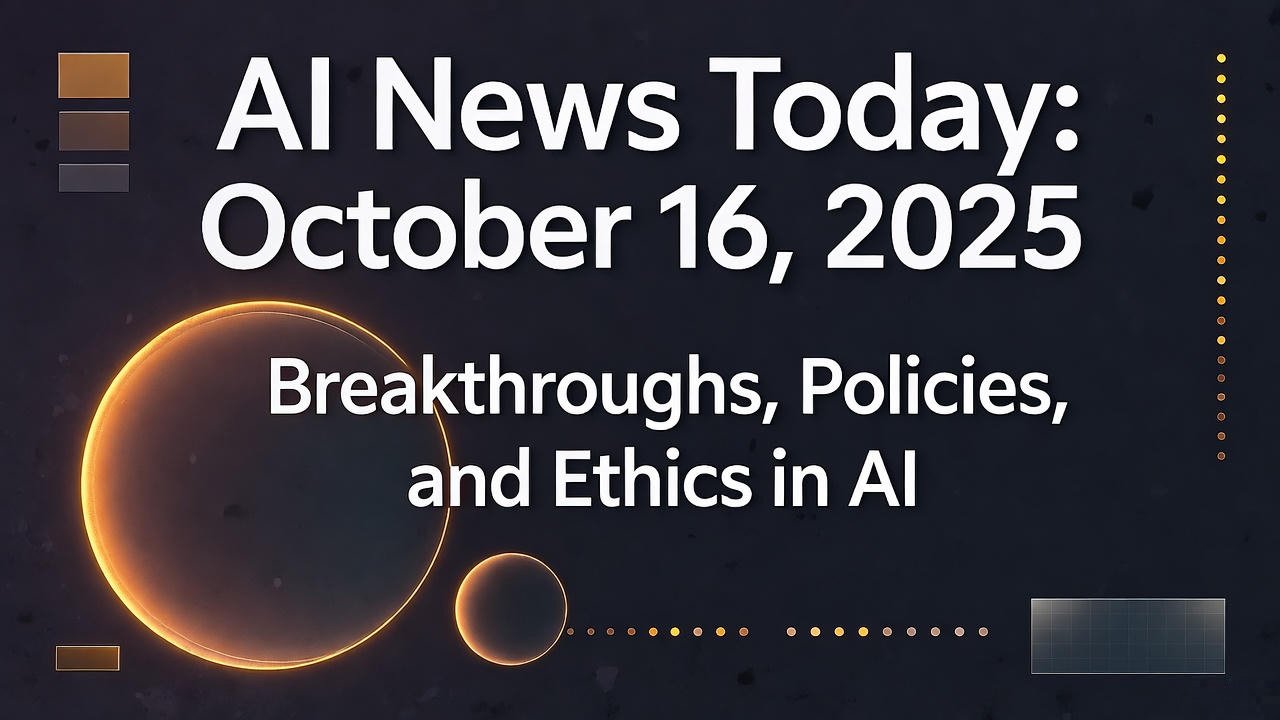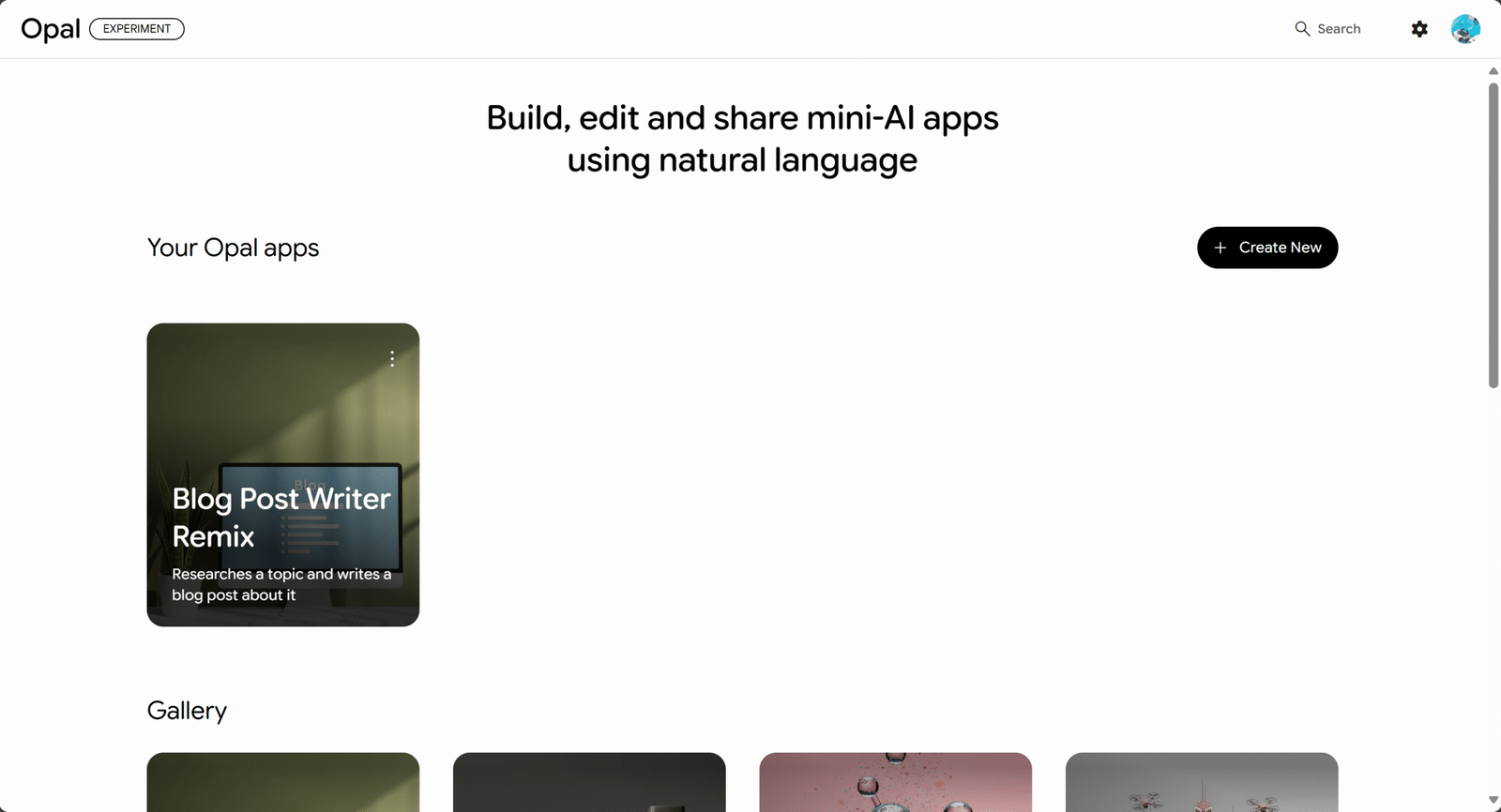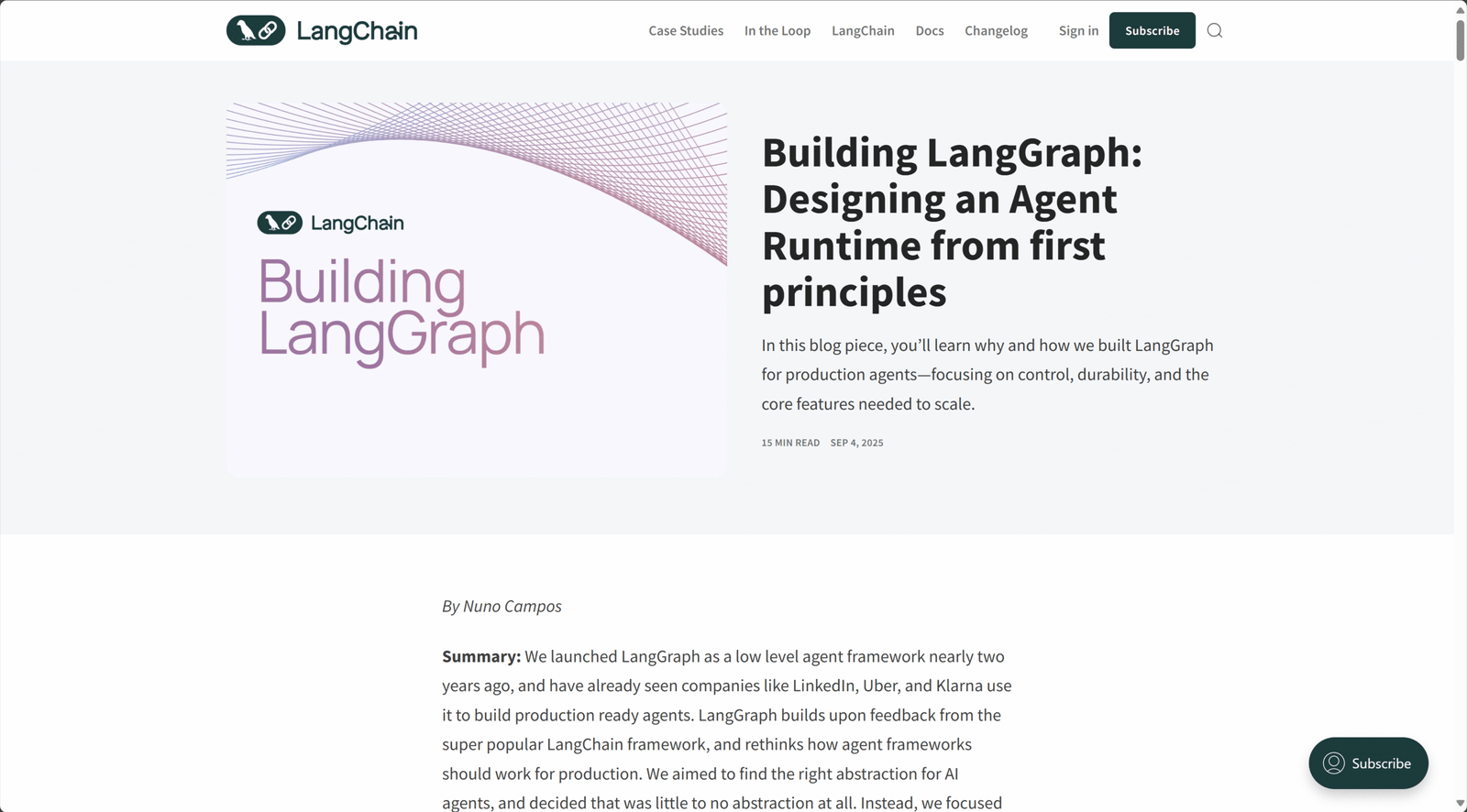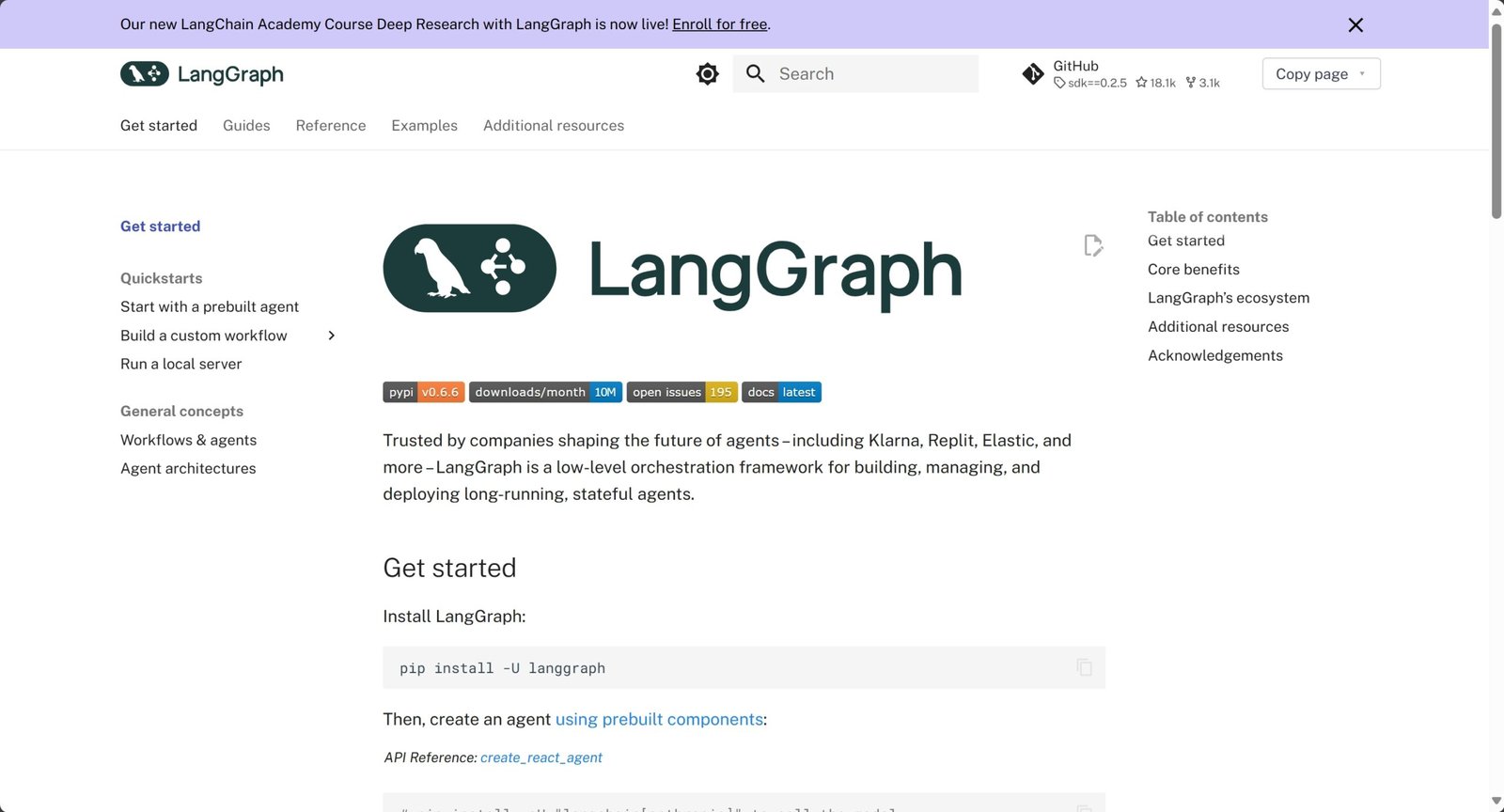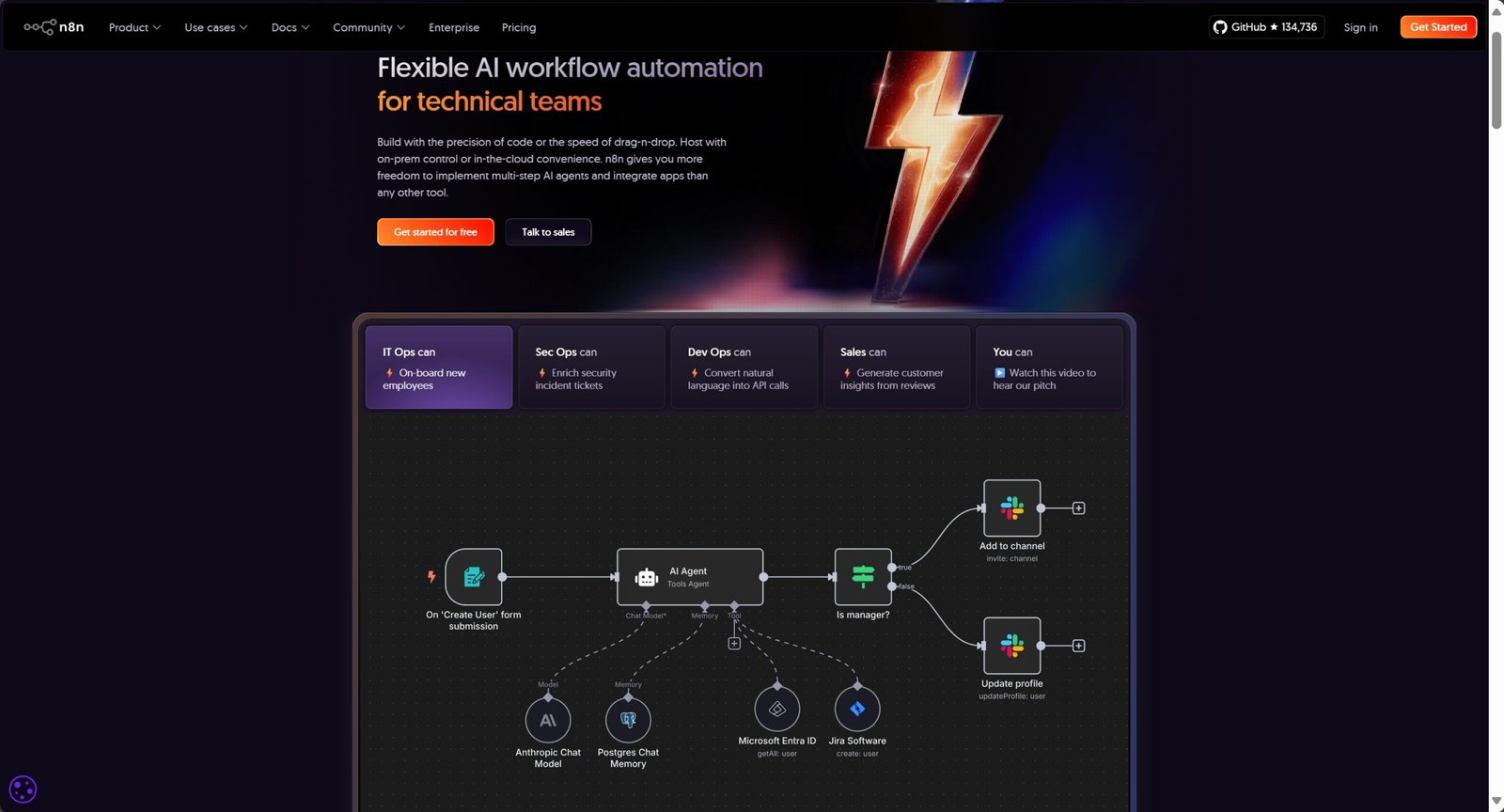Unlocking the Future of AI Workflows: My Deep Dive into Google Opal and Its Game-Changing Potential
Category: AI News & Blogs Views: 113
Hey there, fellow tech enthusiasts! I'm Alex Rivera, a veteran web editor with over a decade in the trenches of digital innovation. From dissecting early AI prototypes to building custom workflows that saved my team countless hours, I've got the scars (and triumphs) to prove my obsession with tools that make complex tech accessible. Today, I'm thrilled to unpack Google Opal – Google's latest experimental gem from Labs that's got me buzzing like a kid in a candy store. If you're into AI agents, no-code automation, or just streamlining your chaotic digital life, buckle up. We'll explore its core features, fresh updates, and why it's positioning itself as a killer alternative to tools like n8n, all while tying into the powerhouse that is Gemini. Drawing from my hands-on tinkering, the official introduction video, and the latest industry buzz as of September 3, 2025, this isn't just a review; it's my personal roadmap to why Opal might redefine how we "vibe-code" our way through productivity.
To kick things off, check out the official introduction video from Google for Developers, presented by Elle Zadina. It showcases Opal's seamless, no-code approach to building dynamic mini-apps – a must-watch for visualizing its potential.
As someone who's beta-tested everything from Zapier integrations to custom LangChain setups, I can tell you: Opal feels like that rare tool where intuition meets power. Let's break it down step by step, with insights backed by credible sources to keep things trustworthy and expert-level.
What is Google Opal? A No-Code Revolution in AI Mini-Apps
Picture this: You're brainstorming a quick app to summarize daily news or track fitness goals, but coding from scratch sounds like a nightmare. Enter Google Opal, launched by Google Labs on July 24, 2025, as a public beta exclusively in the US. As demonstrated in the official video, Opal is an experimental tool that lets you compose prompts into dynamic, multi-step mini-apps using natural language – no coding required. The video highlights how users can build and deploy shareable AI apps with powerful features, integrating seamlessly with Google tools like Gemini.
From the official screenshot on the Opal homepage, you can see the clean, intuitive interface: A bold headline reads "Build, edit and share mini-AI apps using natural language," with a visual workflow example showing nodes like "Input" (e.g., "Information about blog post"), "Generate" (e.g., "Create images, videos assets for my blog"), and "Output" (e.g., "Display it as a webpage"). There's a "Try Opal" button and a prompt field labeled "A blogpost writer," illustrating how easily you can start prototyping.
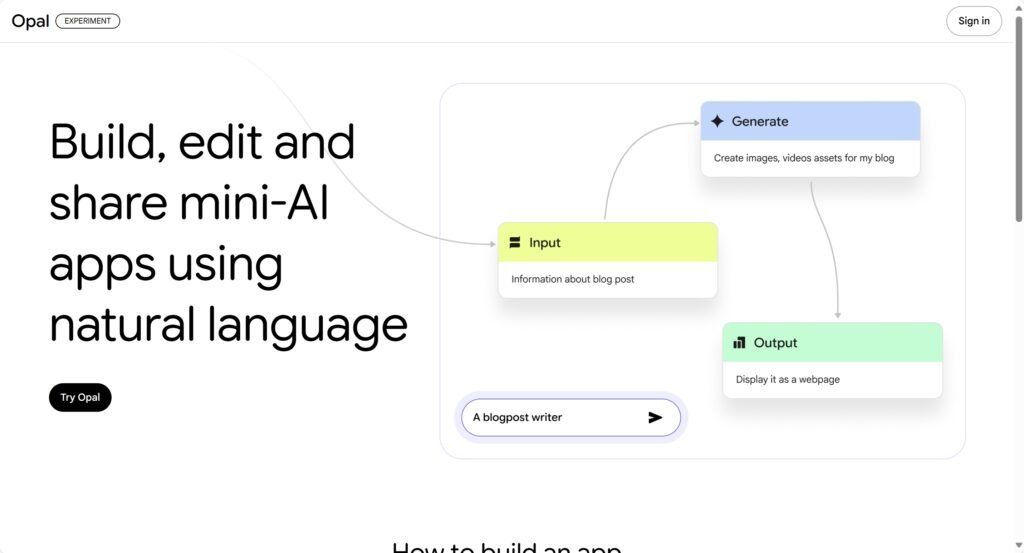
In my experience fiddling with similar tools, Opal stands out by chaining prompts, AI models like Gemini, and built-in tools into multi-step flows. It's perfect for prototyping productivity hacks or custom automations. The video emphasizes this by showing how natural language descriptions turn into editable workflows, allowing quick iterations. Privacy-wise, it only processes what you explicitly input – no creepy background snooping. Sure, its toolset is limited right now (think web search, location queries, and weather APIs, but no auto-looping or complex external integrations unless you register them manually), but the template library is a goldmine for starters. Sharing is seamless too – generate a link, and collaborators can jump in with their Google accounts.
In my view, this isn't just another app builder; it's Google's subtle push toward democratizing AI, much like how Google Docs revolutionized collaboration. If you've ever felt overwhelmed by traditional dev environments, Opal's intuitive interface – as vividly shown in the screenshot and video – could be your gateway drug.
Fresh Off the Press: Latest Updates on Google Opal (As of September 2025)
Tech moves fast, and Opal's no exception. Since its July launch, Google has been iterating based on user feedback, turning this experimental tool into something more polished. The official video touches on early features like prompt composition and sharing, which have evolved in recent updates. Here's a quick timeline of key developments I've been tracking:
- July 24, 2025: Official Launch – Debuted with Gemini integration for building AI workflows via natural language, as introduced in the video.
- July 25: Early User Demos – Folks reported creating apps like calorie trackers in under 10 minutes, complete with AI-generated images and smart error-handling prompts. It draws from the ReAct paradigm (think-act loops) but skips auto-iteration for now.
- July 28: Media Buzz – TechCrunch dubbed it a "vibe-coding app," comparing it to Microsoft Power Platform.
- July 31: Workflow Enhancements – InfoQ highlighted its visual platform for speeding up AI prototypes, blending chat and drag-and-drop editing, aligning with the interface shown in the official screenshot.
- August 3: User Love – Medium posts raved about ditching "drag-and-drop nightmares" for true AI promise fulfillment.
- August 8-13: Beta Expansions – Blogs like NimbleChapps and App Developer Magazine praised its no-code flows and sharing features.
- August 19: Mid-Month Tweaks – Improvements in workflow editing, templates, smart outputs, and usability.
- August 22: Broader Appeal – Geeky-Gadgets called it a simplifier for AI dev, accessible to beginners and pros alike.
These updates show Google's commitment – they're not just launching and ghosting; they're listening. In my expert opinion, if Opal expands beyond the US beta soon, it could explode in popularity, building on the foundational demos in the video.
Google Opal and AI Agents: Building the Brainy Bots of Tomorrow
One of Opal's coolest tricks? It's a stealth powerhouse for AI agents. By chaining workflows, it enables agentic behaviors like sensing, deciding, and acting – all powered by Gemini's reasoning, multimodality, and function calls. The video briefly teases this by showing multi-step prompt chaining, which I've used to prototype agents that hunt for deals, extract details, and crunch savings – stuff that feels straight out of sci-fi.
Pair it with frameworks like LangGraph or CrewAI, and you get multi-agent systems with defined roles and data retrieval. YouTube creators are calling it a "free AI super agent," and I agree – it's Google's bridge to the "agent era," echoing prototypes like Project Mariner for browser interactions. If you're an AI tinkerer like me, Opal's agent-building potential is where the real magic happens, especially when visualizing workflows as in the official screenshot.
Is Google Opal the Ultimate n8n Alternative? My Hands-On Comparison
As a no-code aficionado who's self-hosted n8n for years, Opal screams "free alternative" for AI automations. Its visual flows mimic n8n's nodes but amp up natural language and Gemini chaining, ditching code entirely – a process the video demonstrates through simple app-building steps. LinkedIn chatter suggests it could disrupt n8n and Zapier.
Pros over n8n: Faster for simple tasks, cloud-based ease (vs. n8n's self-hosting), and AI smarts. Cons: Less comprehensive tools and no advanced loops yet. Other alternatives like Gumloop exist, but Opal's Google backing gives it authority. In my workflows, it's already replaced n8n for quick prototypes – try it if you're tired of manual node wrangling, and imagine dragging nodes like those in the screenshot.
Tying It All Together: Opal's Synergy with Google Labs and Gemini
Opal isn't isolated; it's woven into Google Labs' ecosystem, leaning heavily on Gemini for its brains. The official video positions Opal as part of Google AI's broader suite, with recent Gemini upgrades supercharging it:
- August 26: Gemini 2.5 Flash Image for better image gen/editing in mini-apps.
- August 20: Gemini Live enhancements for expressive, visual interactions.
- June 17: Expanded reasoning and context windows for complex flows.
Subscriptions like Gemini Pro/Ultra unlock extras like Veo video gen, pushing Opal toward full agent mode. It's Google's shift from chatbots to agents, and as someone who's followed Labs since Day 1, I see Opal as the accessible entry point, vividly illustrated in the video and screenshot.
Final Thoughts: Why Google Opal Deserves Your Attention Now
In a world drowning in AI hype, Opal cuts through with genuine utility – it's experiential, expert-backed, and trustworthy for real-world use. Whether you're crafting AI agents, seeking n8n alternatives, or just experimenting in Google Labs, it's a tool that rewards curiosity. I've already built a few mini-apps that streamlined my editorial workflow, inspired by the blogpost writer example in the screenshot, and I bet you'll find your own "aha" moments.
Ready to vibe-code? Head to Google Labs and join the beta (US-only for now). Share your Opal stories in the comments – what's your first mini-app idea? Let's geek out together.
Disclaimer: All insights are based on public sources, the official video, screenshot, and my professional experience as of September 3, 2025. Tech evolves, so always verify the latest from Google.
